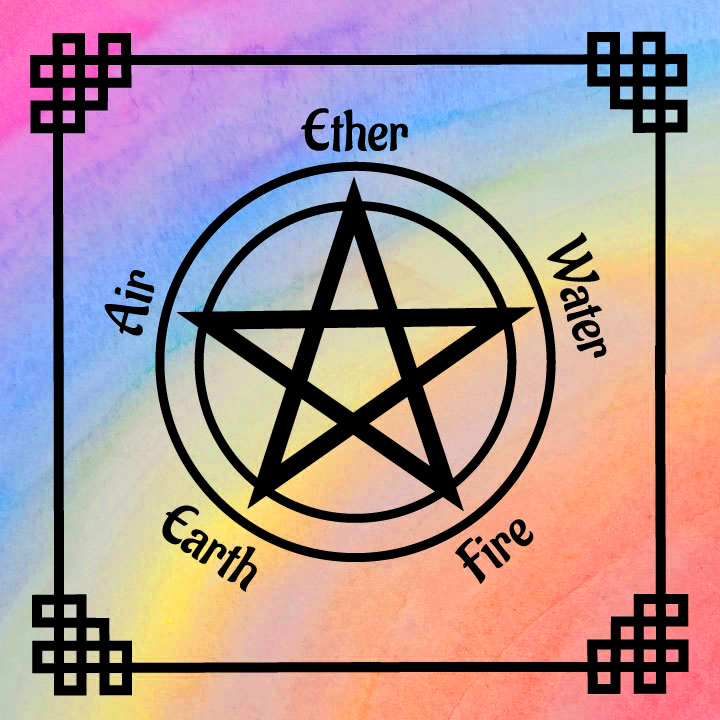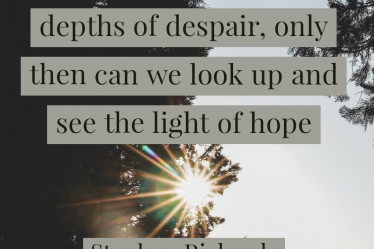
When you think of elements today, one often will think of the Periodic Table of Elements. The Ancients, however, did not have that handy infographic or the centuries of scientific exploration that it took to get us to the point we are at now. Back then, this term was used to describe the most commonly observed states of matter. It is in the transition between those states that we find the beginnings of MAGIC!
Elements In History:
The four most commonly recognized element in ancient cultures were Earth, Air, Water & Fire. These represented the material states of Solid, Gas, Liquid & Plasma respectively. There are minor variations on this idea throughout the cultures. A few of which will be touched upon here.
A fifth element of “Ether” or Spirit was postulated by the greek philosopher, Plato in his book Timaeus, where he equated these elements to the five Platonic Solids that we discussed in Sacred Geometry. There are several different spellings of this word, including æther, aether, and aither. I will delve deeper into the topic of Ether in a future article. For now, let’s stick to the main four, as they are the most tangible in the material realm.
When Aristotle described the elements in his On Generation and Corruption, he explained that each element has two key defining features. By separating these elements into a grid, you can see how each corresponds with the element next to it. Where Water is both Wet and Cold is both Hot and Dry, Earth is Dry and Cold while Fire is Hot and Dry. It may not seem to make sense that Air would be Hot and Wet, but remember we are talking about steam or vapor, not the actual air we breathe.
Other cultures that recognized these classical elements were the people of Egypt, Persia, Babylonia, India, Tibet, and Japan. The Chinese had a similar structure, but added Metal to the list. There are a few others with difference, but these are the ones I wish to focus on here.
The Buddhist twist on the idea described the four main elements as representing Solidity, Mobility, Fluidity, and Temperature respectively. These are more like sensory qualities than elements, as they focus less on the materialistic aspects of life, and more on the senses and extra sensory perceptions of the world around them. These concepts can be seen in how they approach every action of their daily lives as well as their rituals.
The Persian philosopher Zarathustra believed these elements to be so sacred that he created an entire religion around protecting their purity. This is commonly known as the world’s first Monotheistic religion, where there is one God and his one Adversary. However, the Hindu belief that all Gods are avatars of one great creator God, Brahma, could lead one to the opinion that Hindu was the first true monotheistic religion. I will leave the debate to the experts in each of these religions. I am still simply a student.
The Emerald Tablets of Egypt claim that Isis described the four classical elements as the material that coats and binds the soul. Each living creature on earth is attuned to at least one of these elements, often more than one. This also means that each living thing will have it’s equal and opposing force. While the validity of the tablets, and their supposed author, Hermes Trismegistus of Atlantis, is still in much debate, there is still much wisdom to be gleaned from the stories told within.
In more modern pagan practices, the elements are used to represent the cardinal directions. They are also represented on each point of a pentagram. In Wicca, the ritual of Calling the Corners invokes the guardians of each cardinal direction by using their corresponding element. Followers of various High Magic traditions also use a similar rituals known as The Lesser Banishing of The Pentagram to open their ceremonies by inviting the powers that be into their sacred space.
Elements In Magic:
There are many ways that elements can be incorporated into your rituals and spell work. The best way to do this is to have a symbol of each element, usually a small amount of soil, water, incense, or a small brazier. You could also create sigils for each element. In a pinch, a candle can be used to represent all elements combined. The wax in it’s solid state representing Earth, the melted wax for Water, smoke for Air, and the flame for Fire.
When using elemental magic, it is best to be aware of what elements correspond with what intentions. This will help increase the potency of your spell, and avoid potential adverse effects. Here is a quick breakdown of each element for a quick reference guide.
Fire
Keywords: Energy, passion, assertiveness, lust
Direction: South
Season: Autumn
State: Plasma, Teperature
Chakra: Solar Plexus
Palmistry: Middle Finger
Sacred Geometry: Triangle, Tetrahedron
Colors: Red, Orange, Yellow, Gold, Brown
Tarot: The Emperor, Strength, Wheel of Fortune, Temperance, The Tower, The Sun, Judgement, The House of Wands, All Kings
Earth
Keywords: Nature, nurturing, heaviness, fertility
Direction: North
Season: Spring
State: Solid, Inertia
Chakra: Root
Palmistry: Little Finger
Sacred Geometry: Square, Hexahedron
Colors: Green, Yellow, Purple, Brown, Black, White, Red
Tarot: The Empress, The Hierophant, The Hermit, The Devil, The World, The House of Pentacles, All Pages
Air
Keywords: Intellect, knowledge, spirit, creation
Direction: East
Season: Winter
State: Gas, Mobility
Chakra: Heart
Palmistry: Index Finger
Sacred Geometry: Octahedron
Colors: Orange, Yellow, Blue, Purple, White
Tarot: The Fool, The Magician, The Lovers, Justice, The Star, The House of Swords, All Knights
Water
Keywords: Intuition, wisdom, relaxation, Tao (The Flow)
Direction: West
Season: Summer
State: Liquid, Fluidity
Chakra: Sacral
Palmistry: Ring Finger
Sacred Geometry: Icosahedron
Colors: Blue, Purple, Red, Pink, Black, Silver
Tarot: The High Priestess, The Chariot, The Hanged Man, Death, The Moon, The House of Cups, All Queens



